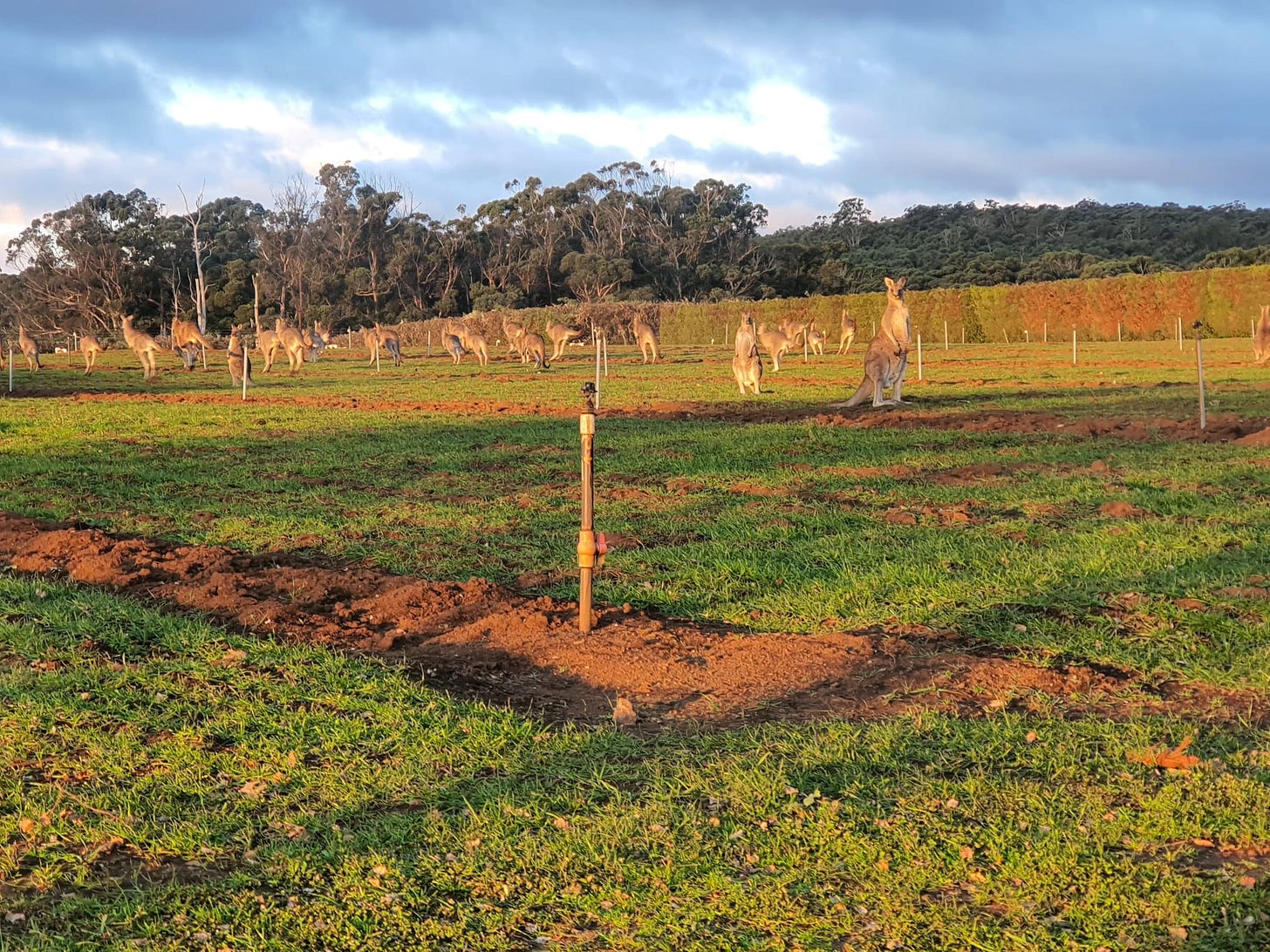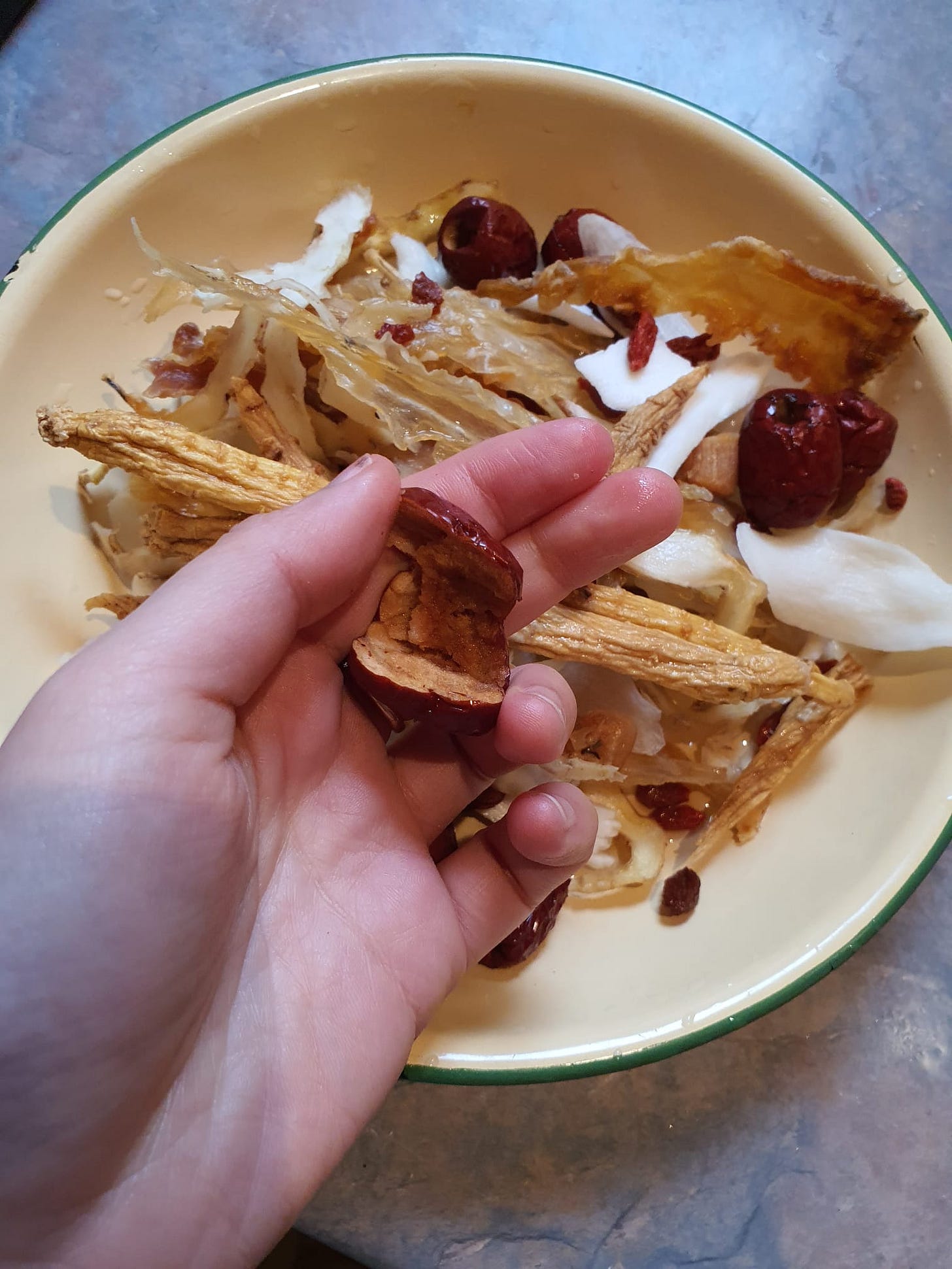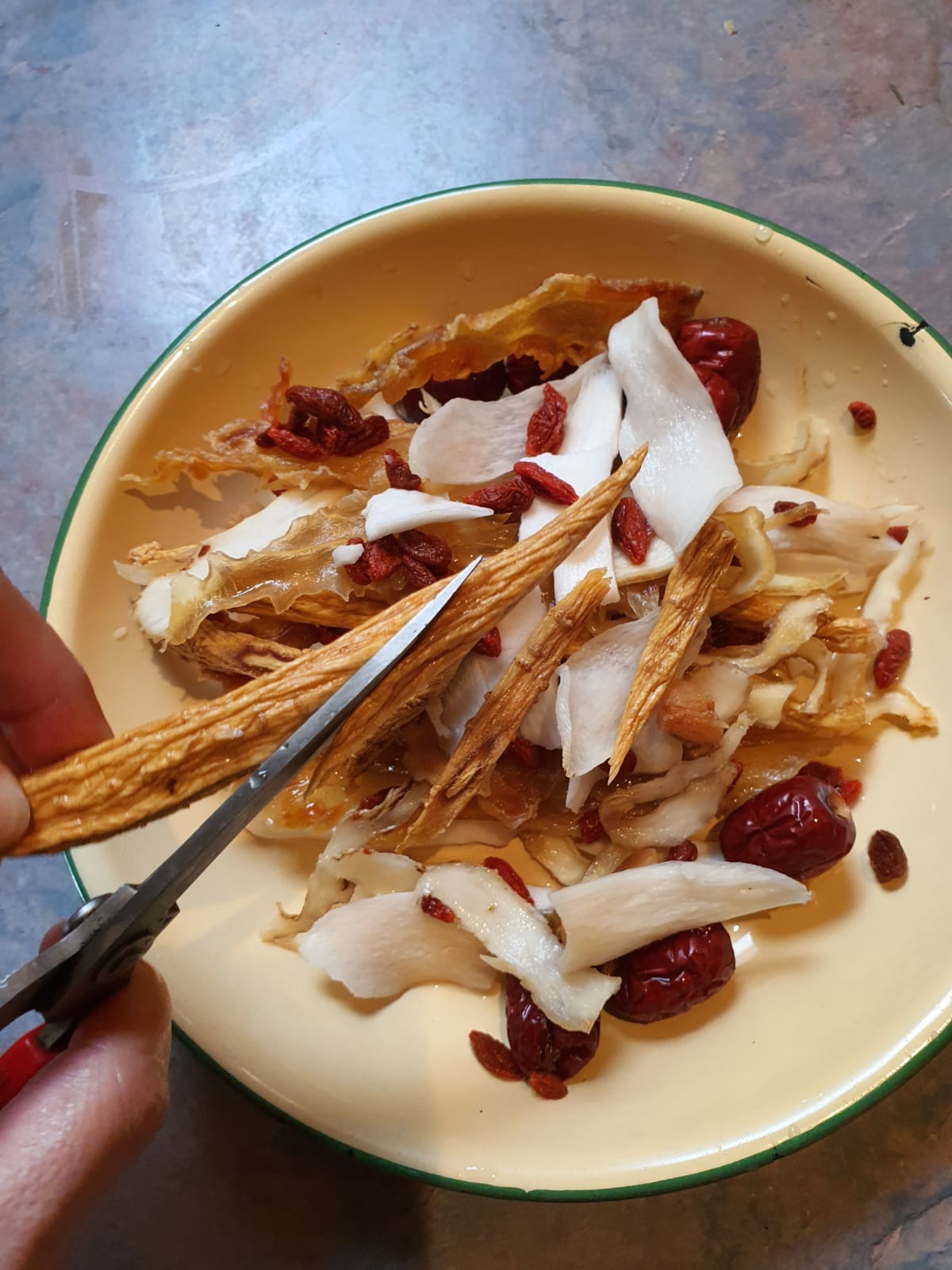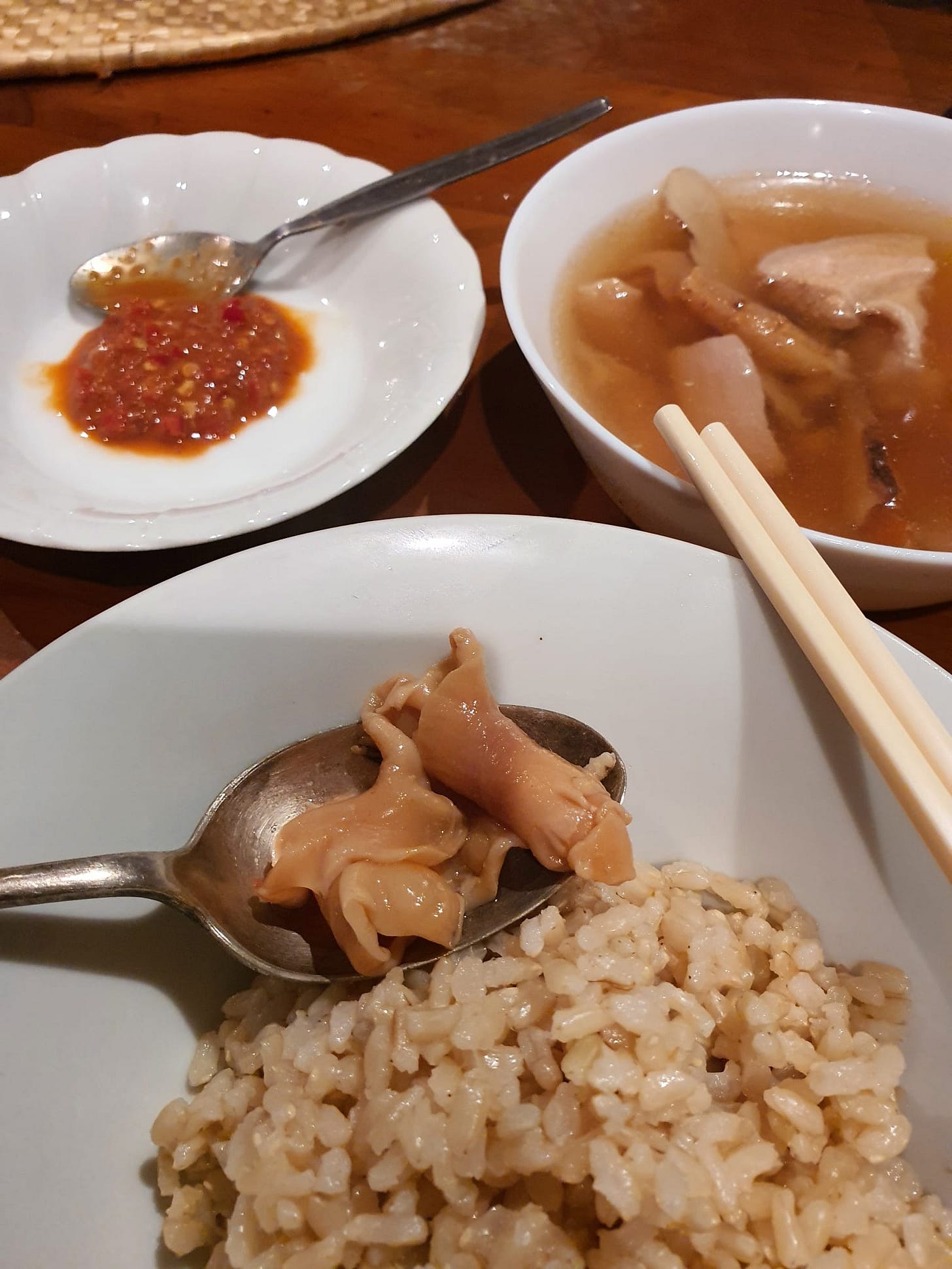Hello from kangaroo-abundant fields! My mom just came over last week to visit us and, because it’s the height of winter here in Daylesford (I know it doesn’t look it in the photo above), we spent most days cooking indoors. An archetypal Asian mother, she brought a whole luggage of edible treats. Amongst other things, there was my favourite sambal belacan (you can purchase it from NTUC), sachets of red date tea, bottles of bentong ginger powder, and homemade sun-dried red chillies.
She also introduced me to what she calls ‘cats’ ears’, a type of wood ear mushroom that, when rehydrated, really does resemble a black cat’s ear, and has a wonderful crunch. We used it in everything from dumpling filling to chap chye and a refreshing celery salad.
On the very first dinner I cooked for her, I realised that I had been cooking rice wrong my whole life and figured out why my cooked rice always sticks hideously to the sides and bottom of the pot. The key, she says, is to wash the rice in a separate bowl, before cooking in the ricecooker.
Apart from the above, she also has further commandments when it comes to cooking brown rice:
1) For 1 cup of brown rice, cover it with enough water to reach the 1.5 mark, so that it cooks long enough to ‘bloom’ and be digestible.
2) To ‘soften’ the rice, add a drizzle of olive oil, and to enhance its flavour, some salt and ginger (or ginger powder).
I’ve tried cooking brown rice her way and the results were night and day.
But what I really wanted her to teach me to make was herbal soups. My knowledge on traditional Chinese medicinal herbs is atrocious, and her being here in my kitchen was the perfect opportunity to learn. Like so many of her recipes, it begins with cleaning. Fastidious cleaning of ingredients is part of Cantonese cooking that prizes purity of flavour.
It seems to me that there are several ways she cleans ingredients at home:
1) Good ol’ rinsing with water - this is more for surface dust
2) Soaking in milk - this works especially well for fish
3) Rub with flour and salt, then rinse - great for anything from grapes to meat. I know that rubbing grapes with flour sounds bizarre, but my mother swears that it makes the grapes shiny and clean
4) Blanching - this is to remove impurities and unwanted odour from meat
With the rising trend of forwarded videos on Whatsapp, I can never know whether her techniques are truly traditional or a more recent viral hack. Here’s my mom rubbing 500g pork belly with flour and salt before rinsing. Choose pork belly that is less fatty for soup.
As for the herbs, we used a handful of the following (beginning from top left and going anti-clockwise): red dates, Solomon’s seal (yu zhu), poor man’s ginseng (dang shen), dried scallops, wolfberries (gou qi), mountain yam (wai san), and fish maw (fa gao). They have to be rinsed to remove any dust from the sun-drying process.
Once rinsed, the red dates are snipped open and the dang shen snipped into lengths to help them release their sweetness more readily into the soup.
The herbs go into a pot, and the pork (cut into bite-sized pieces) goes on top. Instead of filling the pot up with tap water, my mom uses boiled water from the kettle. She says if you don’t do this, your soup wouldn’t taste good. I suspect that the effect of scalding the meat seals in the flavour, but who knows? You want just enough water to cover everything. Season the soup lightly with salt at this point.
After an hour in the pressure-cooker, it’s ready (longer if you simmer on the stove in a regular pot). Season with more salt to taste and serve!
Completely tender pork and herbs (yes you can eat them) and flavourful broth with a deep colour. Also, check out how plump my mom’s brown rice is. This right here in my spoon is the fa gao (fish maw) and it has a gelatinous, chewy texture that reminds me a little of sea cucumber - my favourite! The perfect accompaniment for the pork and fa gao is sambal belacan or some light soy sauce and cut chilli padi. Cooking with my mom has really shown me how easy and straightforward it can be to make a proper Chinese soup, and it is so fuss-free that I hope to do it more often!
Announcement for members: For July’s member cookalong, we will be making curry chicken and roti prata on 31 July 2022! We’ll try making different types of prata together - coin, plain, and egg. You can sign up for the Zoom session here! (The video for last month’s Nonya Zhang cookalong has also been uploaded for you to cook with anytime ✨)












